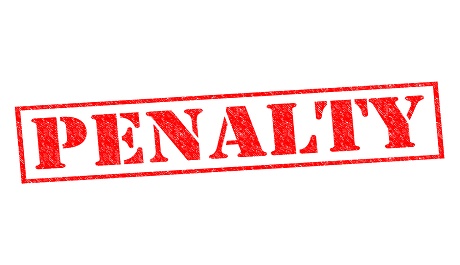IRS Income Tax Penalties for Preparers and Filers
All in an effort to minimize filing fraudsters, the IRS has accelerated major information form filing. And to drive home their emphasis, the IRS has drastically increased penalties.
Nov. 01, 2017

All in an effort to minimize filing fraudsters, the IRS has accelerated major information form filing. And to drive home their emphasis, the IRS has drastically increased penalties.
Examples of affected forms include: Forms 1099, 1098, W-2, W-3 and W-2G.
The amount of the penalty is based on when you file the correct information return or furnish the correct payee statement. The penalty for not filing a correct information return is separate from the penalty for not providing the correct payee statement. For example, if you don’t file a correct Form 1099-MISC with the IRS and don’t provide a correct Form 1099-MISC statement to the payee, you may be subject to two separate penalties.
Free Newsletter for Tax Pros |
| If you are a tax preparer, you might be interested in the weekly Tax Practice Advisor newsletter. The first issue of the Tax Practice Advisor newsletter can be viewed or subscribed to at www.cpapracticeadvisor.com/mailing/tpa/11/02/2017. |
The Rules
Pre-2016:
In the old days (pre-2016), to avoid a penalty, businesses, including tax-exempt and government entities, had to send Copy A of Forms 1098, 1099, W-2G and other information returns to the Internal Revenue Service with transmittal Form 1096 by:
- The last day of February of the following year if filing by paper; or
- March 31 if filing electronically.
Employers were also required to send Copy A of Form W-2 to the Social Security Administration with transmittal Form W-3 by:
- The last day of February of the following year if filing by paper; or
- March 31 if filing electronically.
In addition, employers filing 250 or more information returns had to (and still must) file electronically unless granted a waiver by the IRS.
Since 2016:
- Employers must send Copy A of Forms W-2 and W-3 to the Social Security Administration by January 31 of the following year for both paper and electronic forms.
- Employers must furnish Copy B and any other applicable copies of information returns to the employee by January 31 of the following year.
- Businesses, including tax-exempt and government entities, must send Copy A of Form 1099-MISC to the IRS by:
o January 31 of the following year when you’re reporting nonemployee compensation payments in Box 7
o February 28 if filing by paper when you’re NOT reporting nonemployee compensation in Box 7; or
o March 31 if filing electronically when you’re NOT reporting nonemployee compensation in Box 7.
The Penalties
The penalty rates and maximums for not filing correct information returns and/or not furnishing correct payee statements, including inflationary adjustments if applicable, are reflected in the following table (* – as adjusted for inflation):
|
How late is the form? |
Penalty Rates & Maximums |
|
Filed 1-30 days late |
$50 per return/ |
|
Filed 31-152 days late |
$100 per return/ |
|
Filed 153+ days late |
$260 per return/ |
|
Intentional Disregard |
$530* per return/ |
|
How late is the form? |
Penalty Rates & Maximums |
|
Filed 1-30 days late |
$50 per return/ |
|
Filed 31-152 days late |
$100 per return/ |
|
Filed 153+ days late |
$260 per return/ |
|
Intentional Disregard |
$530* per return/ |
Penalties for not filing correct information returns (Code Section 6721) may apply if you:
- Don’t file a correct information return by the due date and a reasonable cause is not shown;
- File on paper when you were required to file electronically;
- Don’t report a Taxpayer Identification Number (TIN);
- Report an incorrect TIN; or
- Don’t file paper forms that are machine-readable.
Penalties for not providing correct payee statements (Code Section 6722) may apply if:
- You don’t provide a correct payee statement by the applicable date and a reasonable cause isn’t shown;
- All required information isn’t shown on the statement; or
- Incorrect information is included on the statement.
To the Rescue
Online information form filing services are now helping preparers file on time and more accurately.
Your secure online account can be set up anytime in advance of the filing season. All payer and payee/recipient forms and information are saved securely year over year for easy access and updates. Filing data may be uploaded and exported in bulk and many providers offer concierge services to handle large-volume filers with ease. Regular email correspondence reminding preparers when to file, where in the process their filings are and any notices of any issues with their filings (such as inaccurate TIN) can be very helpful to ensure timely and accurate preparation. To learn more about online filing services, visit www.eagleviewfiling.com.
———–
Renee Poirier is product manager, Eagle View Filing Solutions, a division of Tenenz, Inc., in Minneapolis, Minnesota. Visit www.eagleviewfiling.com for more information about online filing 1099s and W-2s.
